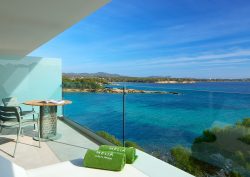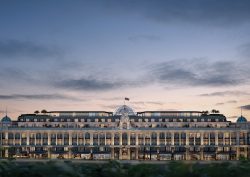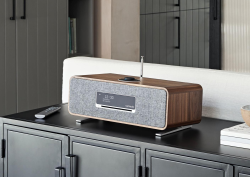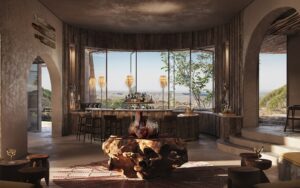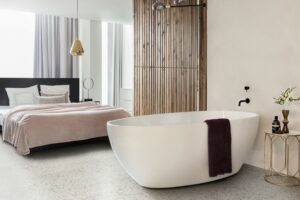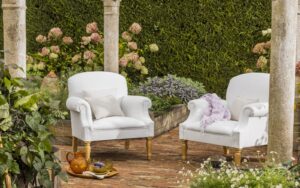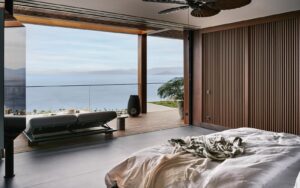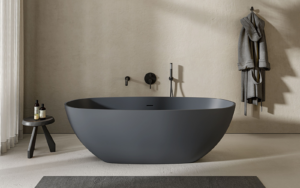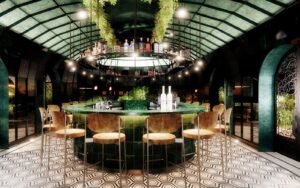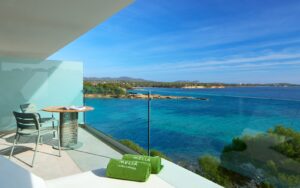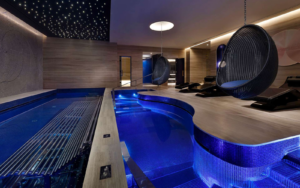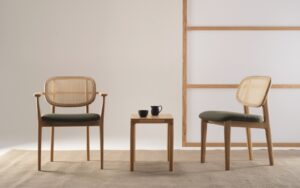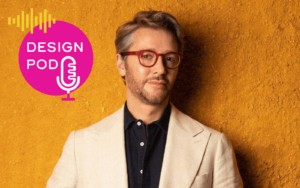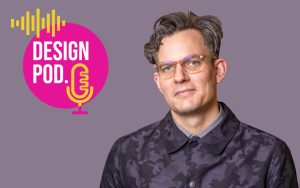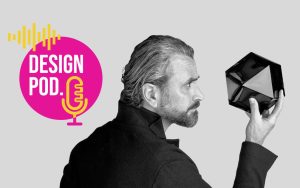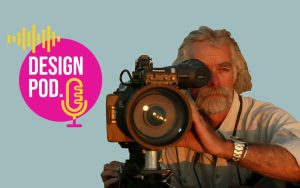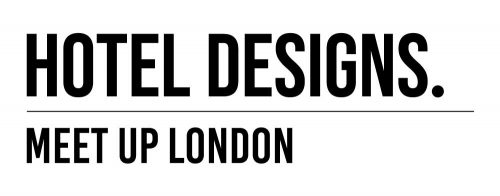Roundtable: Can technology aid sustainable improvements in design?
In collaboration with Spanish KNX company Zennio, Hotel Designs Editor, Sophie Harper, hosted a vibrant discussion alongside Zennio Director, Vidar Thomassen and Head of Commercial, Lee Nunn on the usefulness of technology in aiding sustainable goals with a group of renowned design and architecture experts.
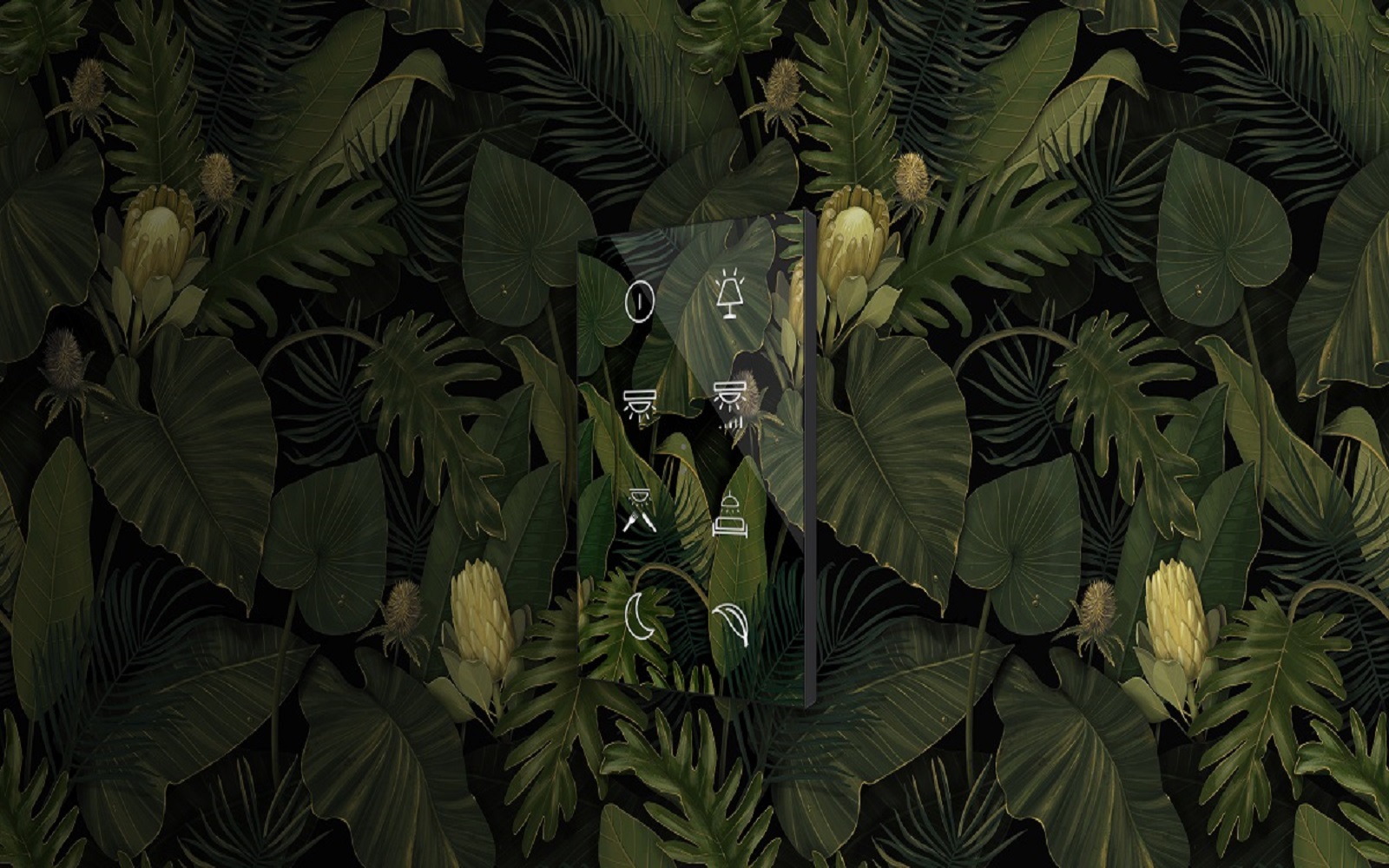
Taking place at Melia White House, Regent’s Park (Zennio’s largest UK project at 698 guestrooms all fitted with Zennio guestroom automation systems), the group were introduced to Zennio’s hospitality solutions to reduce energy impact, which included everything from temperature control to lighting and socket output.
Meet our panellists:
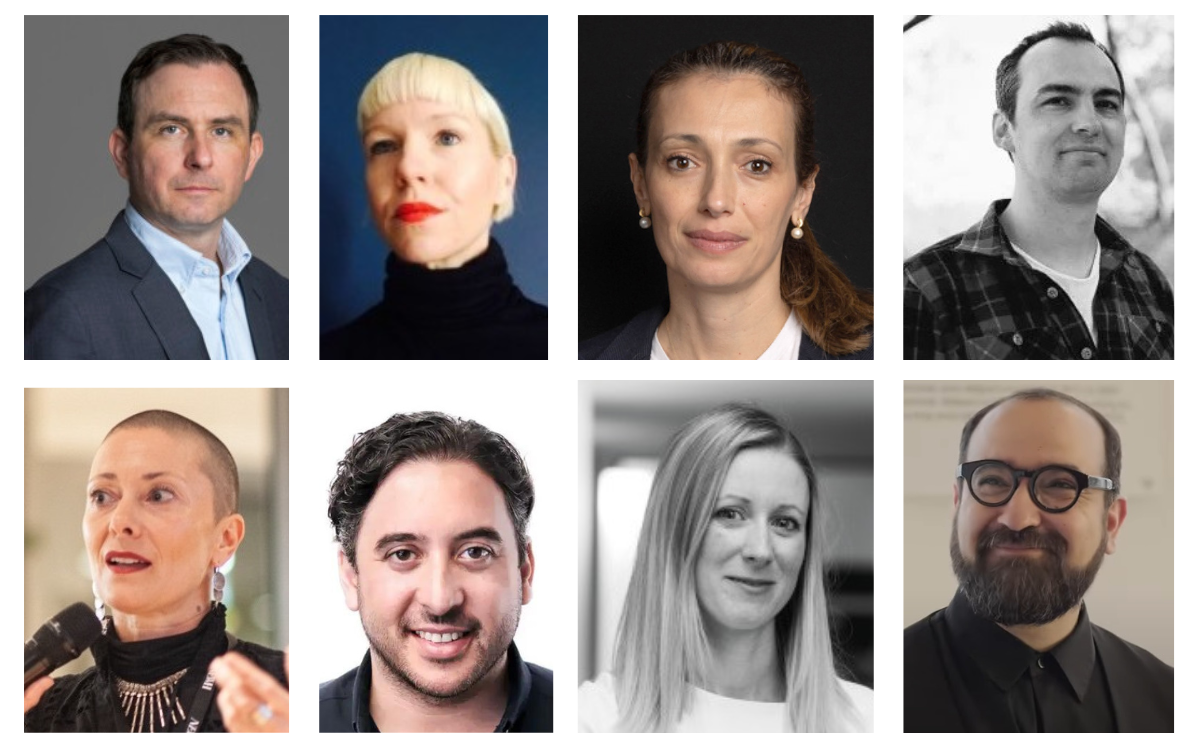 Left to right from the top: Nathan Saint Clare, Associate Principal, WATG; Karen Taylor, Founder and Creative Director, Pattern-Haus; Nathmya Saffarini, Hospitality Studio Leader, HKS; Jeremy Grove, Managing Director and Head of Design, Sibley Grove; Mathilde La Vilaine, Founder, LA VILAINE; Tom Thorogood, Co-Head of Design, Studio Moren; Amy Roebuck, Senior Associate, Richmond International; Hitch Derras, Senior Designer, David Collins Studio
Left to right from the top: Nathan Saint Clare, Associate Principal, WATG; Karen Taylor, Founder and Creative Director, Pattern-Haus; Nathmya Saffarini, Hospitality Studio Leader, HKS; Jeremy Grove, Managing Director and Head of Design, Sibley Grove; Mathilde La Vilaine, Founder, LA VILAINE; Tom Thorogood, Co-Head of Design, Studio Moren; Amy Roebuck, Senior Associate, Richmond International; Hitch Derras, Senior Designer, David Collins Studio
Sophie Harper: What are the biggest challenges when trying to identify areas in which you can make a project more sustainable in its design and operation?
Nathmya Saffarini: It’s trying to align with all stakeholders so we’re all working towards a common goal, understanding the budget and recognising there are operational implications.
Karen Taylor: There are various things to consider, but also discussions tend to change once you get to different stages of a project. I we need to take responsibility to keep sustainable decisions at the forefront of the design scheme because sometimes clients say sure, we want it to be sustainable but then they realise the cost implications and so you have to be creative to get through the value engineering.
Mathilde La Vilaine: We have to justify the cost of everything, which is why it’s important we understand where the costs can be recouped and how long a specific product will take to pay for itself. There needs to be a reason for everything.
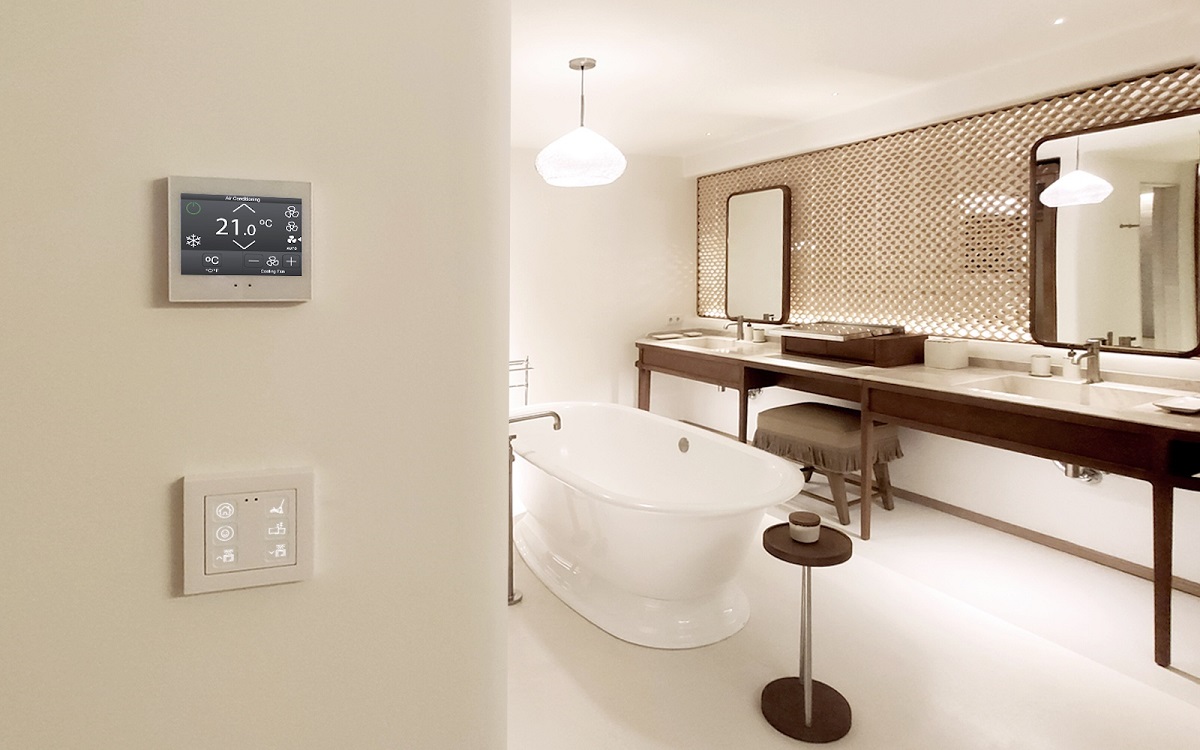
Image credit: Zennio
SH: So at what point do you all start looking for sustainable solutions or alternatives for each of your projects?
Nathan Saint Clare: I’ve never worked on a project where the vision and operations were 100% aligned and I find it the most fascinating area to dig in because everyone operates differently – Sic Senses operates differently to Four Seasons, and everyone has different goals, but often you’ll find creativity comes from having constraints. From our perspective, the way we work is not formulaic but there is a rigour to the process of design that starts at the very beginning with site planning, solar orientations, all the things that we do before you guys come in later so that there is less work for the systems to do. If you design smart in the beginning, you’re building less, but one thing we found critical – especially in hospitality buildings – is water consumption levels.
Nathmya Saffarini: For us, in terms of the planning side of things, we have quite complexed programmes that look at all of this. When it comes to the more complicated projects where you aren’t necessarily able to do all the things you could do if you were starting from scratch, the biggest challenge for us from a sustainability view is when you want to start introducing technology to your sustainability efforts is to prove to your clients the value of that technology. The question we often hear is ‘has that been done before?’ so it’s important to be able to show clients that something does work and is proven – this lessens the fear of implementing something new.
Nathan Saint Clare: Ten years ago, you had to reverse engineer things to fit a brief, but now we have a far easier time having those conversations up front because it’s become standard practice to address those processes.
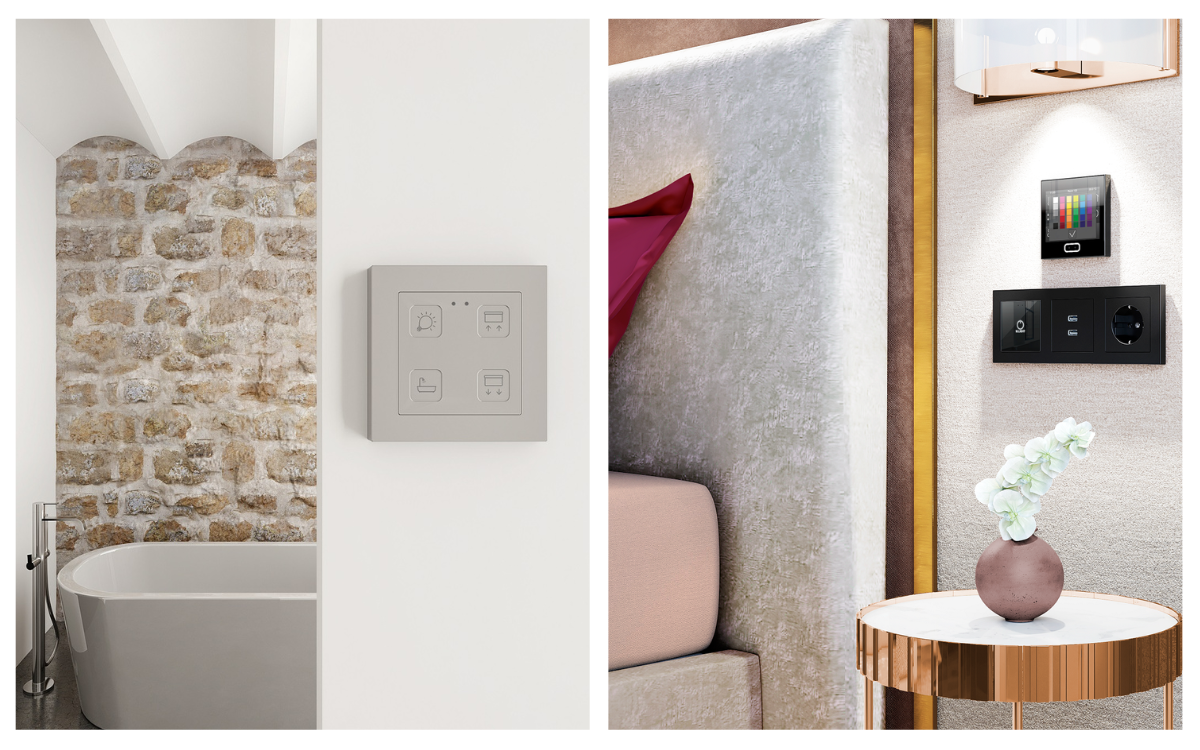
Image credit: Zennio
SH: Is the sustainable conversation generally an easier one to have with clients now?
Jeremy Grove: It’s certainly becoming a much easier conversation now we have hard numbers to back up what we’ve been saying for a very long time. We finished a hotel project in 2014 with four rooms based on disassembly – so sourcing all the materials or as much as we could to ensure they were circular – so either completely recyclable or working with leasing companies rather than buying all the products and also looking at maintenance and repair. We were able to get the real numbers from that project in 2021 when we did the refurb where basically the whole room came out, was factory finished and reinstalled. It was then we discovered that they’d had a 75% reduction in carbon and a 60% reduction in their CapEx, which was £1.2million.
SH: How can we avoid ‘greenwashing’ and using misleading products and services?
Amy Roebuck: Architects are a lot further ahead than interior designers. It’s difficult as we have to try and wade through all the information and make sense of what’s what. There’s no legislation really dedicated to interiors, so it’s up to you as a studio or individual to do the research and think creatively. Everyone’s trying to do their bit but we’re not quite there yet.
Nathan Saint Clare: At WATG we’re really interested in adaptive reuse and also renovation. Building a hotel is a long-term investment and it needs to be designed to be renovated in a sustainable way – it’s something we have at the forefront of our minds when we’re planning a new project.
Hitch Derras: We spend a lot of time on research, and that includes the history of the building, the area, and trying to find local materials, local artists and craftspeople. The main impact we can have on a project is with what we specify and that can be said for finishes, appliances and as a company we’ve created a sustainable materials guide for ourselves that lists all the materials in our library and has a traffic light code for each – it takes a lot of time and effort to compile this information but we’re finding it’s easier now to be able to add to our guide. We use this system when we’re creating mood boards for a design and the aim is to have more than 50% of the board supplied with products from the ‘green’ category.
SH: How difficult is it to integrate technology and new systems to more heritage projects?
Tom Thorogood: It’s all about making sure whatever you’re putting in is sympathetic to the building. When you’re working on a heritage building the last thing you want to do is have something super contemporary or out of place in plain sight because that affects the overall feeling of the space. Details are such an important factor, everything has to be right in order for the design to be successful. It’s a constant learning curve understanding what processes can be brought in – we have a project at the moment where sections of the interiors are listed where you can’t alter or tamper with the panelling for instance so trying to figure out where to put tech for wireless systems can be problematic.
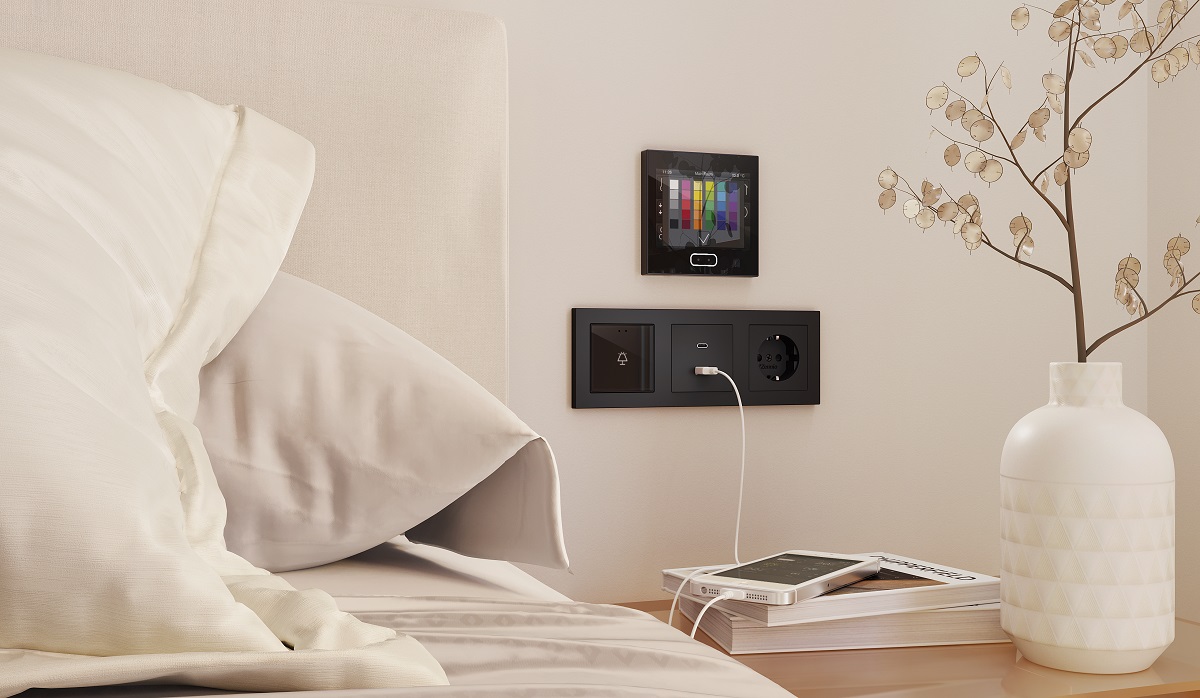
Image credit: Zennio
SH: Are you concerned about the use of AI and new technology, or do you think we’re on the verge to discovering some incredibly useful tools to help with day-to-day working processes?
Nathan Saint Clare: I’ve been working with AI now for almost two years and I have honestly been amazed by how much I’ve been able to de-clutter, and maybe that’s because the projects I’m involved with are large and complexed and so by their very nature become more about project management and less so design, but I’ve been able to, alongside our team, to utilise technology with AI not just to take care of project management tasks but also to help us to iterate and conceptualise faster. We’re all in the communication business, not just design, and we’re able to use these tools to make ourselves clearer and more concise, which then gives us time to do the more creative things that we specialise in.
Tom Thorogood: It’s about working out how to use it in a way that suits your needs. AI is here to stay, it’s going to become more advanced and we will all end up using it in our day-to-day, so it’s about accepting that and realising the benefits that offers. I love it as a starting point for research – obviously I double-check everything, but to find out more about an area or the history of a building the information is with you from different sources in an instant. We’re already seeing the time it’s saving our teams on visualisations that need amending – rather than spending ages moving things around in Photoshop, you can use AI assisted programmes to do it in seconds.
Jeremy Grove: I actually disagree with the use of AI in the context of speeding things up, we’re constantly trying to manage expectations and get clients to slow down and think about the decisions they’re making. Not to say that efficiencies aren’t welcome, but we still want to be having those conversations and sometimes instant processes aren’t entirely helpful with that.
Nathmya Saffarini: I agree with Jeremy, it sort of reminds me when we moved from AutoCAD to Revit, where it’s all about the information you put in and sometimes just because you see an image and someone builds a BIM model, it doesn’t mean it’s been built the right way or that this is what things will look like onsite – there is a danger that the CGIs we put forward might be misunderstood, but also making sure we don’t take away the simple pleasure of picking up a pencil and drawing and making sure future generations of designers don’t lose those skills.
Amy Roebuck: I went to a panel where a student speaking as part of that panel said that as part of her course she was studying AI, and there was a lot of parametric architecture and everything was in AI at that time and it actually put her off and she started to look at more interesting things and so her end of year project actually changed because she didn’t want to go down that route.
Mathilde La Vilaine: There is a joy to sketching things and making things by hand. My concern with AI is that everything will become very standardised and uniform. The most beautiful products, materials, pieces of art are imperfect – AI lacks the human touch and so doesn’t excite me as much as the work and design born from passion.
Zennio is one of our Recommended Suppliers and regularly features in our Supplier News section of the website. If you are interested in becoming one of our Recommended Suppliers, please email Katy Phillips.
Main image credit: Zennio

